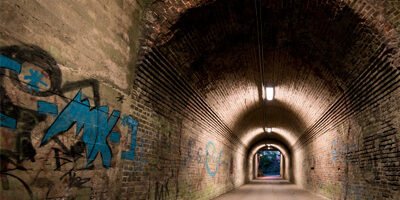NPR featured a story about a Washington Post reporter who simultaneously reported on drug crimes while being addicted to heroin while living in Washington D.C. in the 1980s and 1990s. From the article:
In a new book, S Street Rising, Castaneda writes that S Street was once an epicenter of the drug war. Now, it’s much quieter. Neighbors walk by with baby strollers, birds chirp, and a new coffee shop just opened. But Castaneda’s book looks back to the worst of times, when the city was a combat zone.
“Crack cocaine, and the violence that it brought, was having an extraordinary impact on this city,” he says. And, it turns out, it was having an impact on Castaneda as well — he was a crack addict who bought drugs on the very streets he was covering as a crime reporter. He had come to Washington from Los Angeles for his dream job and had planned to kick the habit he had picked up in California. But he only lasted four days before he went seeking another high.
But the article takes an interesting turn, focusing not just on the effects of his drug use and abuse and his redemption through rehab, but on reconnecting with the community. In particular, he reconnected with a local church.
At the same time, other people were also struggling through the drug war. On S Street, the pastor of New Community Church was trying to minister to a neighborhood full of addicts and dealers…
Castaneda has been clean for 22 years. After a long career at the Washington Post, he’s gone on to other journalism jobs. For many years he was afraid to return to this block, but he did in 2008. He knocked on the door to New Community Church and was surprised when he was invited to speak before the congregation on Easter Sunday.
Castaneda says he was anxious because, by telling his story, he would be acknowledging the role he played in the chaos.
“I was, to some extent, responsible,” he says, “and I didn’t know how people who lived through that might react. I hadn’t figured out: How do you make amends to an entire neighborhood? Well, here was an opportunity. And I said, ‘I’m sorry. I was caught up in my addiction and I realize that I was partly responsible for what occurred.’ ”
The church was happy to hear from him. “When my time was up,” he says, “people in the congregation gathered around me and they thanked me for having talked about what I went through. And one of the women in particular, she hugged me and she said, ‘We’re glad you’re here.’ “
While the article doesn’t describe much of what New Community Church did to try to impact the community of addicts and dealers, the article’s context would suggest that the congregation recognized it’s ecological context — the community surrounding the church — and focused outreach and ministry on those needs. Moreover, the response of the community to Castaneda’s story — to gather around him and thank him for his story — shows the type of open and welcoming culture the congregation has.
If a renown news reporter were to enter your congregation, how would they describe your congregation? Would he or she discuss the outreach into the local community? The culture of the individuals? The beautiful buildings and resources of the congregation? How things get done in the congregation? These are all important ways that congregations function — and are the frames discussed so heavily throughout this website.

